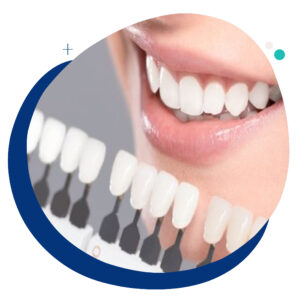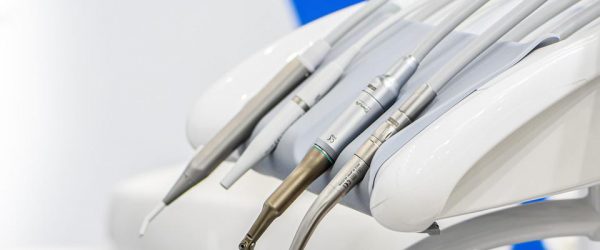Porcelain Veneers
Dental veneers are thin porcelain shells that are bonded to the front of one or multiple teeth to enhance their appearance. Veneers are frequently used to correct chips, cracks, and gaps, or change the color, shape, size, or length of teeth. They are made specifically for each patient and are crafted to look natural and complement the neighboring teeth.

Advantages of Dental Veneers
- Improved Appearance:
Veneers can change the shape, size, length, and color of teeth which can significantly alter how they appear when they smile.
- Minimal Tooth Preparation:
Veneers typically only require a small amount of tooth preparation, as opposed to crowns, which necessitate significant tooth preparatory work.
- Durability:
Veneers are made to be durable and can last for many years with the right maintenance and care.
- Natural Looking:
Veneers are designed to match the color and translucency of natural teeth, giving them a seamless, natural-looking appearance.
- Versatile:
With just one procedure, veneers can correct a variety of cosmetic issues, such as stained, misshaped, chipped, or misaligned teeth.
Are Dental Veneers Long Lasting?
With the right maintenance and care, dental veneers can typically last seven to fifteen years. The durability of veneers can vary based on things like the veneers’ quality, a person’s bite strength, and how well they are maintained. The lifespan of veneers can be increased by brushing, flossing, and visiting the dentist regularly. Veneers may occasionally need to be replaced after a set amount of time, but this is uncommon in most cases. The expected lifespan of veneers should be discussed with a dentist to create a plan for ongoing maintenance and care.
The Process
- Consultation:
The first step is to communicate the objectives with a dentist so they can ascertain whether veneers are the best course of action.
- Preparation:
To make room for the veneers, the dentist will remove a small amount of tooth enamel. To create veneers, a dental laboratory will receive an impression of the patient’s teeth.
- Temporary Veneers:
While the permanent veneers are being created, the prepared teeth may be protected with a temporary veneer.
- Fabrication of Veneers:
The dental laboratory will use your impressions to create veneers that are specifically matched to the shade and shape of your teeth.
- Placement of Permanent Veneers:
The dentist will remove the temporary veneers and place the permanent veneers during the second appointment. Before using dental cement to bond the veneers to the front of the teeth, the dentist will make sure they fit correctly and appear natural.
Do Dental Veneers require Tooth Reduction?
Some tooth reduction is typically required. Although the amount is typically small, it is necessary to get the tooth ready for the veneer. The reduction ensures that the veneers fit correctly and appear natural after they are bonded to the teeth.
The specific case and the kind of veneer being used will determine how much of a tooth will be reduced. To accommodate the veneer, a small amount of tooth enamel may be needed in some situations, while a larger amount of tooth reduction may be necessary for others. The dentist will decide this during the consultation.
It’s important to remember that tooth reduction is irreversible and permanent. The required amount is typically quite small to preserve as much of the natural tooth structure as possible. When deciding how much tooth reduction is necessary, the dentist will consider the condition and strength of the tooth.
Can Veneers be Repaired or Replaced?
If veneers are damaged or if they deteriorate over time, they can be restored or replaced. The precise method of repair or replacement will vary depending on the circumstances, but some typical choices include:
- Repairing a Chipped Veneer:
If a veneer chips, the damaged area can frequently be fixed by bonding a resin. This can help to repair the veneer’s appearance and stop additional harm.
- Replacing a worn-out veneer:
Veneers can thin out and deteriorate over time. They might need to be replaced with new veneers in such circumstances. The new veneers will be made to match the size and shape of the original veneers, and the procedure will typically be like the initial veneer placement procedure.
- Replacing a loose veneer:
A new veneer might need to be installed if the existing one becomes loose. The old veneer will be removed during the replacement process, and a new one will be bonded in its place.
How Do I Care for My Veneers?
It’s essential to adhere to good oral hygiene procedures, which include:
- Use fluoride toothpaste and a soft-bristled toothbrush to brush your teeth twice a day.
- Floss daily to get rid of plaque and food scraps from and in between your teeth and around your veneers.
- Use an antiseptic mouthwash to kill bacteria and give your breath some freshness.
- Avoid practices that can harm your veneers, such as biting your nails, opening packages with your teeth, or chewing on hard objects.
- Red wine, coffee, and tea are examples of foods and beverages that should be avoided or consumed in moderation if you have veneers because they can stain them.



